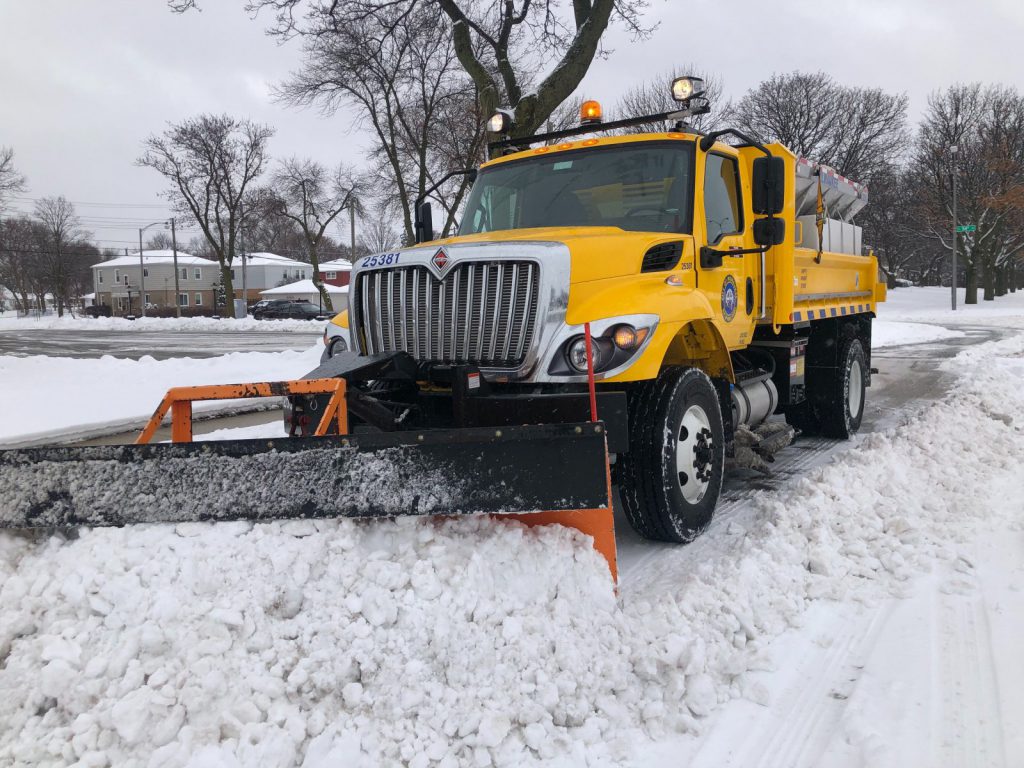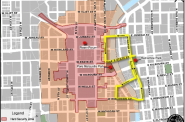Committee Debates Snow Plowing Performance
Are the city's strategies working? Council members want changes.
The city’s snow plowing performance ranges from “great job” to “disaster” according to members of the Common Council’s Public Works Committee.
But much of that is because the storms themselves vary said Department of Public Works (DPW) leaders during a briefing Wednesday.
Alderman Mark Borkowski praised the department for a “great job” responding to the storm that hit the weekend of January 11th, but said the plowing effort in response to a January 18th weekend storm was a “disaster.” He then pivoted to again praise the department. “I can tell you that the third event we had last weekend went very well,” said the alderman. “It’s that whole consistency thing”
DPW operations manager Laura Daniels said the storm over the weekend of the 18th was a challenge to deal with, and not just because it dumped up to seven inches of snow on the city. “This snow came in very icy. There were high winds,” said Daniels. “As the snow falls, the winds whip it around and it gets icy.”
The department’s plowing strategy is to focus first on clearing arterial streets to a “bare pavement” standard before moving to make side streets “safe and passable.”
But Borkowski doesn’t believe that’s an adequate strategy. “We can say ‘yay we did a great job with the major roads,’ but if you can’t get off your block in a neighborhood because they haven’t had a plow in six to eight hours that doesn’t make any sense to me,” said Borkowski. He was backed up by his colleagues Cavalier Johnson and Robert Bauman.
“Passable for whom?” asked Bauman. For motor vehicles, Daniels replied. “If you’re in a motorized wheelchair you could not cross the streets in my neighborhood. I think it’s a serious equity issue,” said Bauman.
Daniels and Commissioner Jeff Polenske said the department continues to adjust its practices to match council requests and other feedback. “There is a lot of dynamic decision making that takes place in these snow operations,” said Polenske. Daniels said an example of that decision making was a move to get crews out clearing sidewalks earlier than they have in the past. She said the department trained more personnel on how to operate the smaller equipment over the past year.
Borkowski acknowledged the challenges of doing the job. “It’s really easy for a guy like me to be critical,” said the south side alderman. “I do recognize that our drivers do the best that they can and it’s a thankless job.”
Daniels said the department works to reach the standards the council demands, but going further will take more personnel and equipment. Bauman pushed DPW to come up with a cost estimate to better clear city-owned sidewalks and intersections. “How much more? We would like to know because maybe we’re willing to spend it,” said the committee chair.
Johnson asked that the city adapt its strategy to making a few passes on arterial streets, then doing a pass of side streets before returning to arterials.
City versus Suburbs
Council members also had questions on why snow plowing performance in the suburbs appears to be better.
“The key difference is the scale,” said Daniels. “The difference is that their routes are seven to 10 miles in length. Ours are 20 to 23 miles in length.”
Borkowski, who represents the city’s irregularly shaped southwest side where city and suburb crisscross frequently, said he sees suburban plows lift up their blades when they go over city streets. “How dumb is dumb, it’s totally inefficient,” said the alderman. “If there ever is a reason for metropolitan government, it’s snowplowing for goodness sakes.” When Urban Milwaukee went for a ride along on January 18th, a plow driver said city drivers keep their plows down on suburban streets and suburban plow drivers are expected to do the same.
For more on the challenges (and successes) the city has with plowing snow, see our coverage from February 2019 or our inside look at the city’s snow plowing operations.
Legislation Link - Urban Milwaukee members see direct links to legislation mentioned in this article. Join today
If you think stories like this are important, become a member of Urban Milwaukee and help support real, independent journalism. Plus you get some cool added benefits.
Related Legislation: File 191225
Political Contributions Tracker
Displaying political contributions between people mentioned in this story. Learn more.
- February 20, 2016 - Cavalier Johnson received $250 from Robert Bauman

























Well guys as Benny Hill would say ” Put more men on the job ” Or the Alderpeoples could lend a hand with shovels and buckets of salt. Any of these guys up for re-election ??